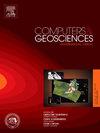Hyperspectral image classification based on faster residual multi-branch spiking neural network
IF 4.2
2区 地球科学
Q1 COMPUTER SCIENCE, INTERDISCIPLINARY APPLICATIONS
引用次数: 0
Abstract
Deep convolutional neural network has strong feature extraction and fitting capabilities and perform well in hyperspectral image classification tasks. However, due to its huge parameters, complex structure and high energy consumption, it is difficult to be used in mobile edge computing. Spiking neural network (SNN) has the characteristics of event-driven and low energy consumption and has developed rapidly in image classification. But it usually requires more time steps to achieve optimal accuracy. This paper designs a faster residual multi-branch SNN (FRM-SNN) based on leaky integrate-and-fire neurons for HSI classification. The network uses the residual multi-branch module (RMM) as the basic unit for feature extraction. The RMM is composed of spiking mixed convolution and spiking point convolution, which can effectively extract spatial spectral features. Secondly, to address the problem of non-differentiability of Dirac function spiking propagation, a simple and efficient arcsine approximate derivative was designed for gradient proxy, and the classification performance, testing time, and training time of various approximate derivative algorithms were analyzed and evaluated under the same network architecture. Experimental results on six public HSI data sets show that compared with advanced SNN-based HSI classification algorithms, the time step, training time and testing time required for FRM-SNN to achieve optimal accuracy are shortened by approximately 84%, 63% and 70%. This study has important practical significance for promoting the engineering application of HSI classification algorithms in unmanned autonomous devices such as spaceborne and airborne systems.

求助全文
约1分钟内获得全文
求助全文
来源期刊

Computers & Geosciences
地学-地球科学综合
CiteScore
9.30
自引率
6.80%
发文量
164
审稿时长
3.4 months
期刊介绍:
Computers & Geosciences publishes high impact, original research at the interface between Computer Sciences and Geosciences. Publications should apply modern computer science paradigms, whether computational or informatics-based, to address problems in the geosciences.
 求助内容:
求助内容: 应助结果提醒方式:
应助结果提醒方式:


